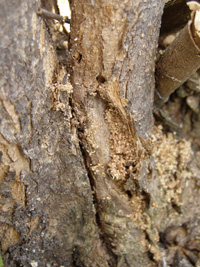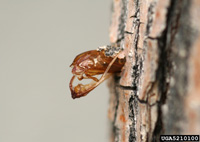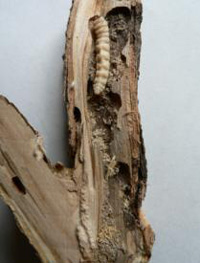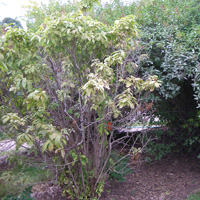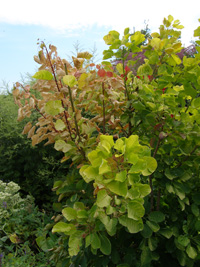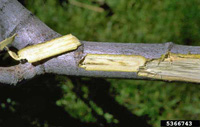Extension > Garden > Diagnose a problem > What's wrong with my plant? > Deciduous > Lilac > Dead or dying branches
Lilac > Stems/branches > Dead or dying branches
1 of 3
Lilac Borer (also known as ash borer)
Podosesia syringae
- Wilted or dead stems
- Base of stem swollen with ¼ inch exit holes
- Sap, sawdust and frass exuding from holes
- Reddish-brown pupa cases sometimes found protruding from exit holes
- Larvae are 1' long; creamy white with light brown head
- Adult is a clear wing moth that resembles paper wasp; smoky brown forewing, hindwing is clear with brown edge.
- More information on Lilac borer
2 of 3
Witches' Broom
Candidatus Phytoplasma fraxini
- Dense clusters of short, thin twigs originate from one area of stem
- Leaves may be small, distorted and yellow
- Brooms are common at the ends of branches and clustered at the very base of the plant
- Entire canopy is pale green to yellow, some leaves with brown margins
- Branches may die and shrub will decline
- More information on Witches' Broom
3 of 3
Verticillium wilt
Verticillium dahlia
- Leaves on one to several branches turn red to yellow, wilt, die and fall off
- Dark olive to gray streaks are often visible in the sapwood if the bark is peeled back
- The entire canopy may show symptoms in a single season or take several years
- Symptoms are often most obvious in late summer and autumn but can occur throughout the growing season
- More information on Verticillium wilt



